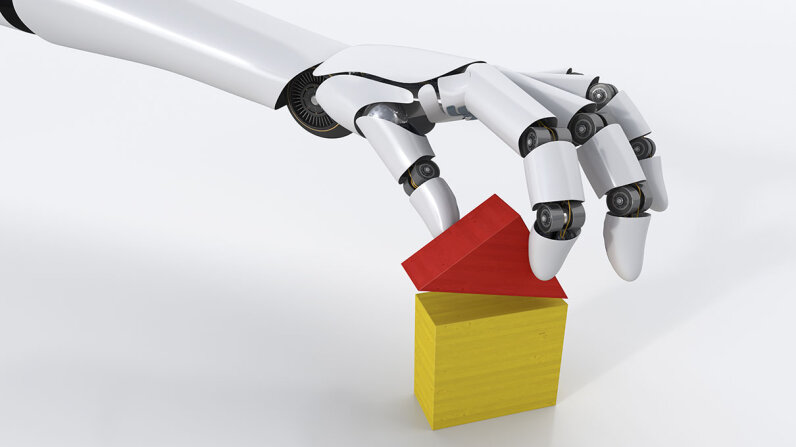
The construction industry hasn’t yet been revolutionized by robotics as much as other industries like automotive manufacturing, but that may change. WESTEND61/GETTY IMAGES/WESTEND61
Today, robots do everything from paint automobiles on the assembly line to perform surgery on human patients. But one big industry that hasn’t yet been transformed by automation is the construction industry, which still utilizes humans to perform both the grunt work and the skilled labor required to erect houses and giant office towers.Anywhere you have unsafe, boring, or drudgery work, you can have a machine do it.Scott Peters, Construction Robotics
But with fewer young workers going into building trades, 86 percent of builders in the United States reported last year having trouble filling those jobs. That’s happening even though more than half are increasing their wages to recruit and retain the workers they need. And the labor shortage may not ease any time soon; the median age of construction workers is 42, and over the next decade, much of the present labor force will approach retirement.0:00
That’s why on construction sites of the future, you’ll be likely to see steel-collar workers such as SAM, a bricklaying robot developed by New York-based firm Construction Robotics, doing an increasing amount of the work. Check out the video above to learn more.
SAM — whose name stands for Semi-Automated Mason — doesn’t look much like a human bricklayer. It has a big mechanical red arm with multiple joints that picks up a brick, applies mortar to it and then places it carefully atop other bricks in a wall. Instead of using hand-to-eye coordination like a human bricklayer, SAM employs algorithms, sensors and a laser to determine precisely where to place the bricks.ReplayUnmuteLoaded: 100.00%Remaining Time -0:00Picture-in-PictureFullscreen
SAM demonstrated its abilities last summer in Washington, D.C., by laying 12,000 bricks to help build a wall in a renovation project at a local school.
Construction Robotics president and co-founder Scott Peters says SAM isn’t intended to take the place of a highly-skilled mason. Instead, the machine is designed to work alongside the human bricklayer and boost his productivity. The bricklayer actually sets up and programs the job and does the trickier parts, such as building corners, while SAM takes over laying large quantities of brick. That’s something that the machine can do up to four times as quickly as a person.
While robots such as SAM lack the flexibility of a human, says Peters, “they’re great at repeatable tasks. They don’t get tired.
But bricklaying robots are just the start. Peters says his company hopes to develop robots that can perform other construction roles, as well. “We think the opportunity is there,” he says. “Anywhere you have unsafe, boring, or drudgery work, or heavy lifting or something else physically demanding, you can have a machine do it. What you have to do is find ways to define the problem and then add sensors and smart technology to do the task.”
Others envision small robotic helicopters, equipped with tool-wielding arms, taking the place of human ironworkers on skyscraper girders. “We still have guys up on scaffolding 1,200 feet [366 meters] up,” Daniel McQuade, chief executive officer of Tishman Construction, said in a panel discussion at the Urban Land Institute’s 2015 meeting in San Francisco. “In the next ten years, there will be drones with a guy running them from a safe place.”
We may soon see driverless construction vehicles as well. Komatsu, a Japanese company that is the world’s second-biggest construction outfit, is developing what it calls smart construction to do the earthmoving work for construction sites. The system utilizes robotic bulldozers and excavators guided by cameras, lasers and 3-D data transmitted from aerial drones hovering above them.NOW THAT’S COOLConstruction robots don’t have to be big. Researchers at the Institute for Advanced Architecture of Catalonia have developed prototypes of human-sized wheeled robots called Minibuilders, which would swarm over a building site and use small 3-D printers to create parts of a structure.
